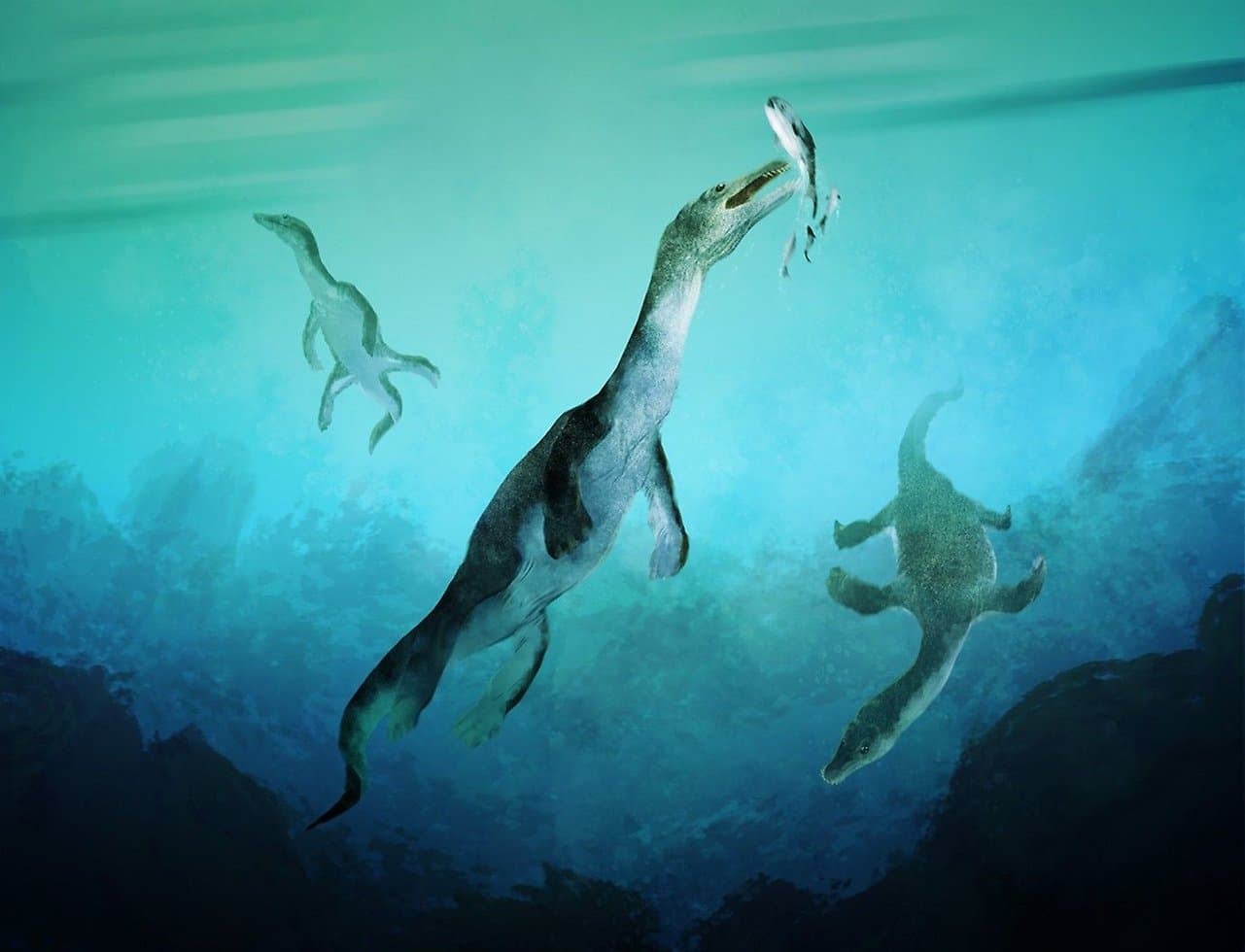The nothosaur vertebra was found in New Zealand and may have lived during the beginning of the Age of the Dinosaurs.
Scientists with Sweden’s Uppsala University in have determined that a marine reptile from the Southern Hemisphere is the oldest fossil found in the Southern Hemisphere. That fossil, a vertebra of a nothosaur, was found on New Zealand’s South Island.
“The nothosaur found in New Zealand is over 40 million years older than the previously oldest known sauropterygian fossils from the Southern Hemisphere. We show that these ancient sea reptiles lived in a shallow coastal environment teeming with marine creatures within what was then the southern polar circle,” Dr. Benjamin Kear from The Museum of Evolution at Uppsala University, lead author on the study said in a press release put out by the university.

(A) mCT image of the GNS CD 540 dorsal vertebra in posterior view. (B) Time-scaled8 Bayesian phylogeny (Figure S1G) of Nothosauroidea (silhouettes) with estimated ancestral ranges (pie charts), dispersal (orange circles) and vicariance (blue circles) events (Table S1). Node numbers indicate geographic ranges (red) and percent (>50%) support (black) for ancestral range estimations. (C) Middle Triassic global map showing ancestral ranges (solid arrows) and possible dispersal routes (dashed arrows; modified from maps compiled by Colorado Plateau Geosystems Inc. https://deeptimemaps.com/). (D) Middle Triassic southern polar map with occurrence of GNS CD 540 (red star). Anatomical abbreviations: as, centrum articular surface; le, laterally expanded neural arch contact; ns, neural spine; tp, transverse process; zg, zygantrum; zy, postzygapophysis. Geographic ranges: (1) Northeastern to Northwestern Tethys; (2) Northwestern Tethys to Eastern Panthalassa; (3) Northern Tethys to Southern Polar Panthalassa; (4) Northern Tethys to Southwestern Tethys.
The vertebra and other nothosaur fossils are about 248 million years old, and were found along what the scientists describe as an “ancient northern low-altitude belt that stretched from the remote northeastern to northwestern margins of the Panthalassa super-ocean.”
“Using a time-calibrated evolutionary model of sauropterygian global distributions, we show that nothosaurs originated near the equator, then rapidly spread both northwards and southwards at the same time as complex marine ecosystems became re-established after the cataclysmic mass extinction that marked the beginning of the Age of Dinosaurs” Kear said. “The beginning of the Age of Dinosaurs was characterised by extreme global warming, which allowed these marine reptiles to thrive at the South Pole. This also suggests that the ancient polar regions were a likely route for their earliest global migrations, much like the epic trans-oceanic journeys undertaken by whales today. Undoubtedly, there are more fossil remains of long-extinct sea monsters waiting to be discovered in New Zealand and elsewhere in the Southern Hemisphere.”
The correspondence detailing the findings can be read on the Current Biology website.



